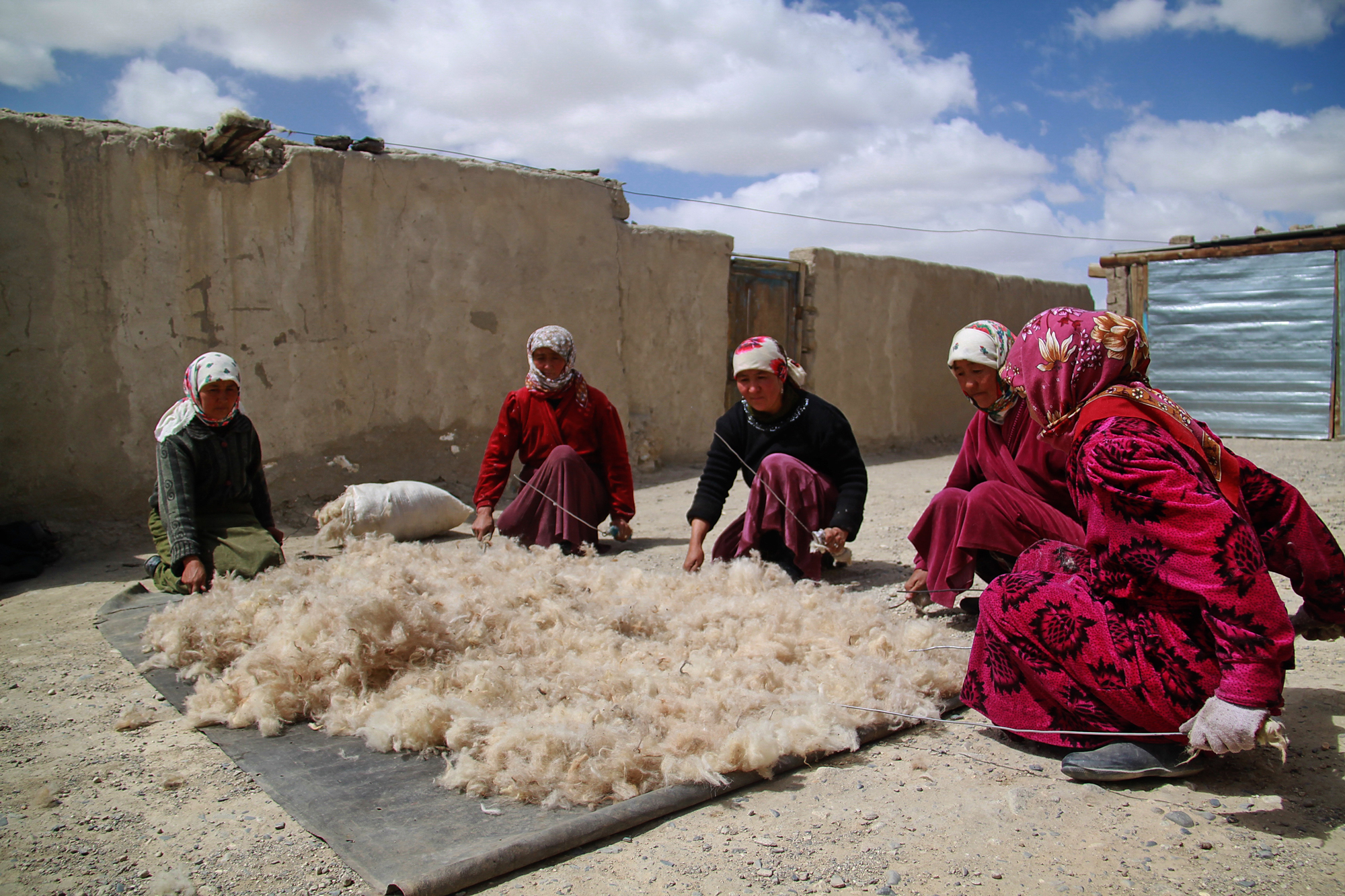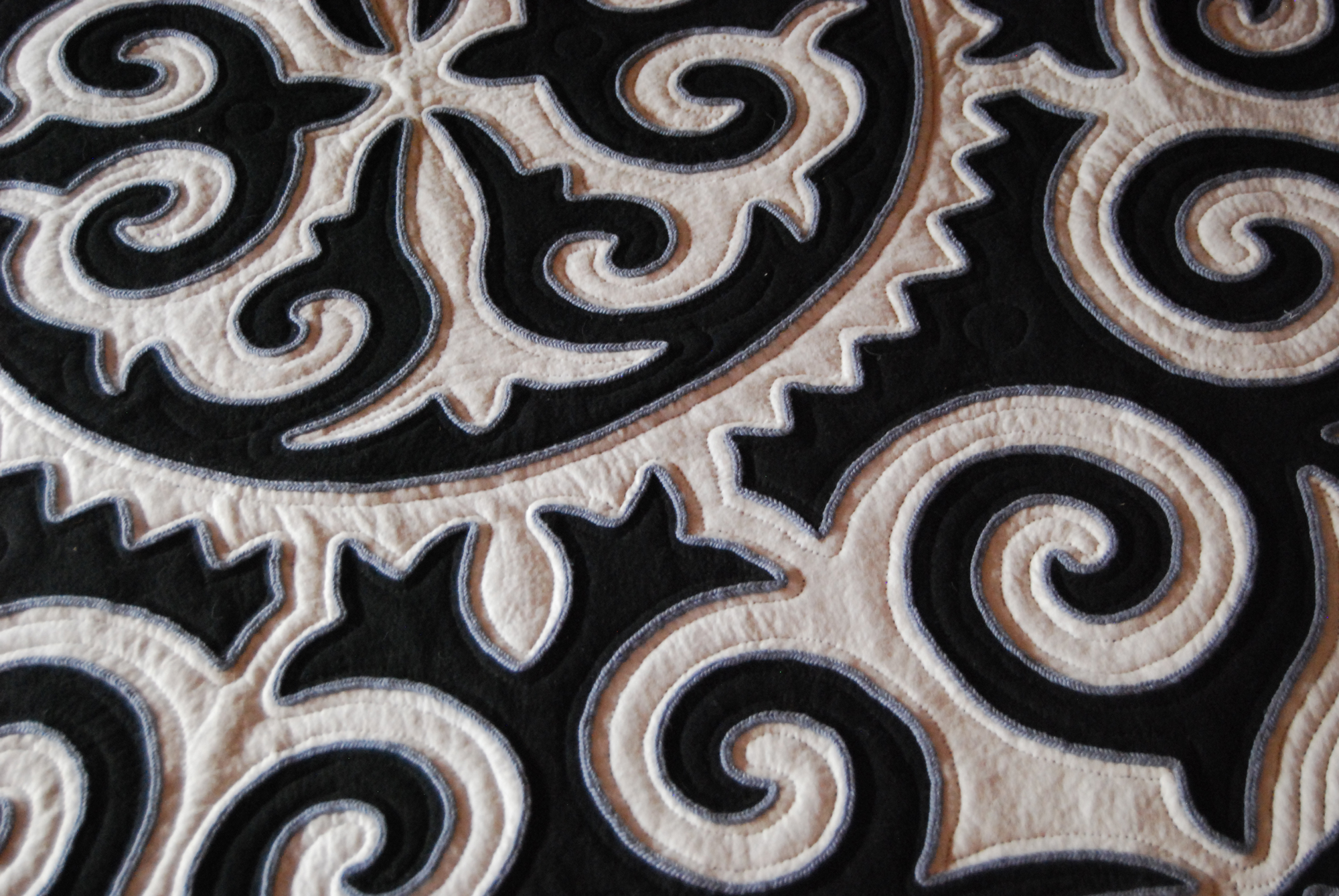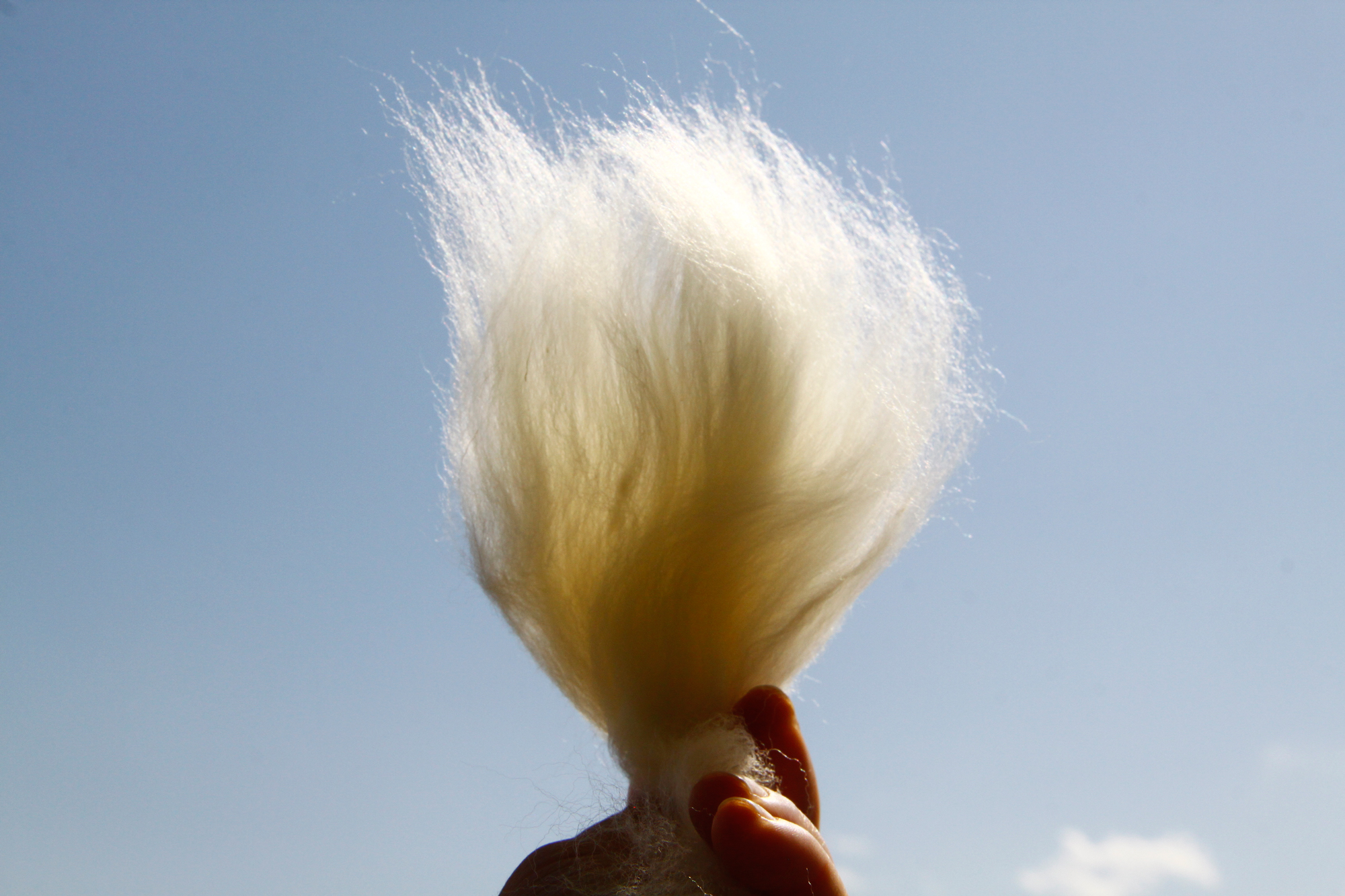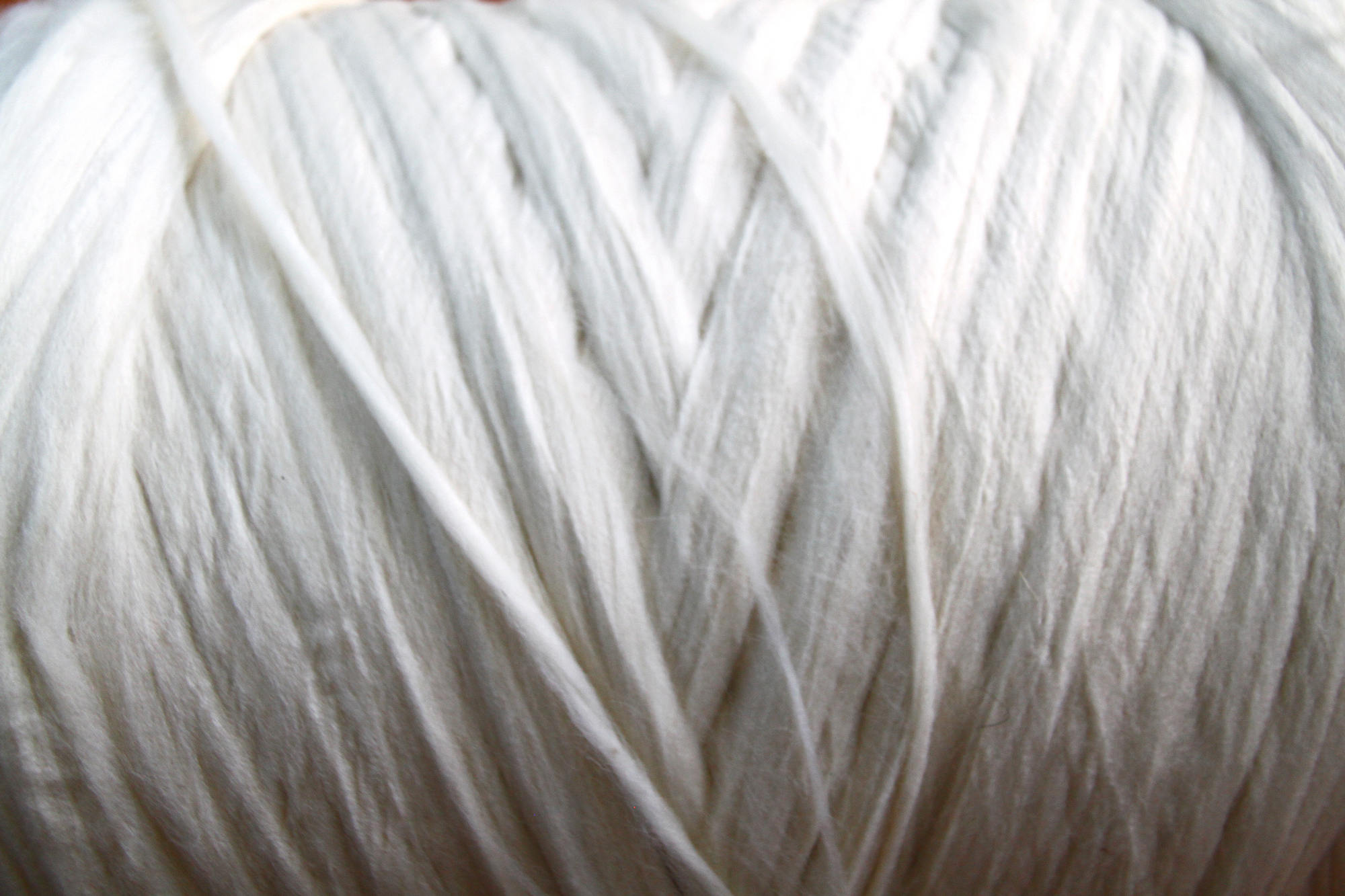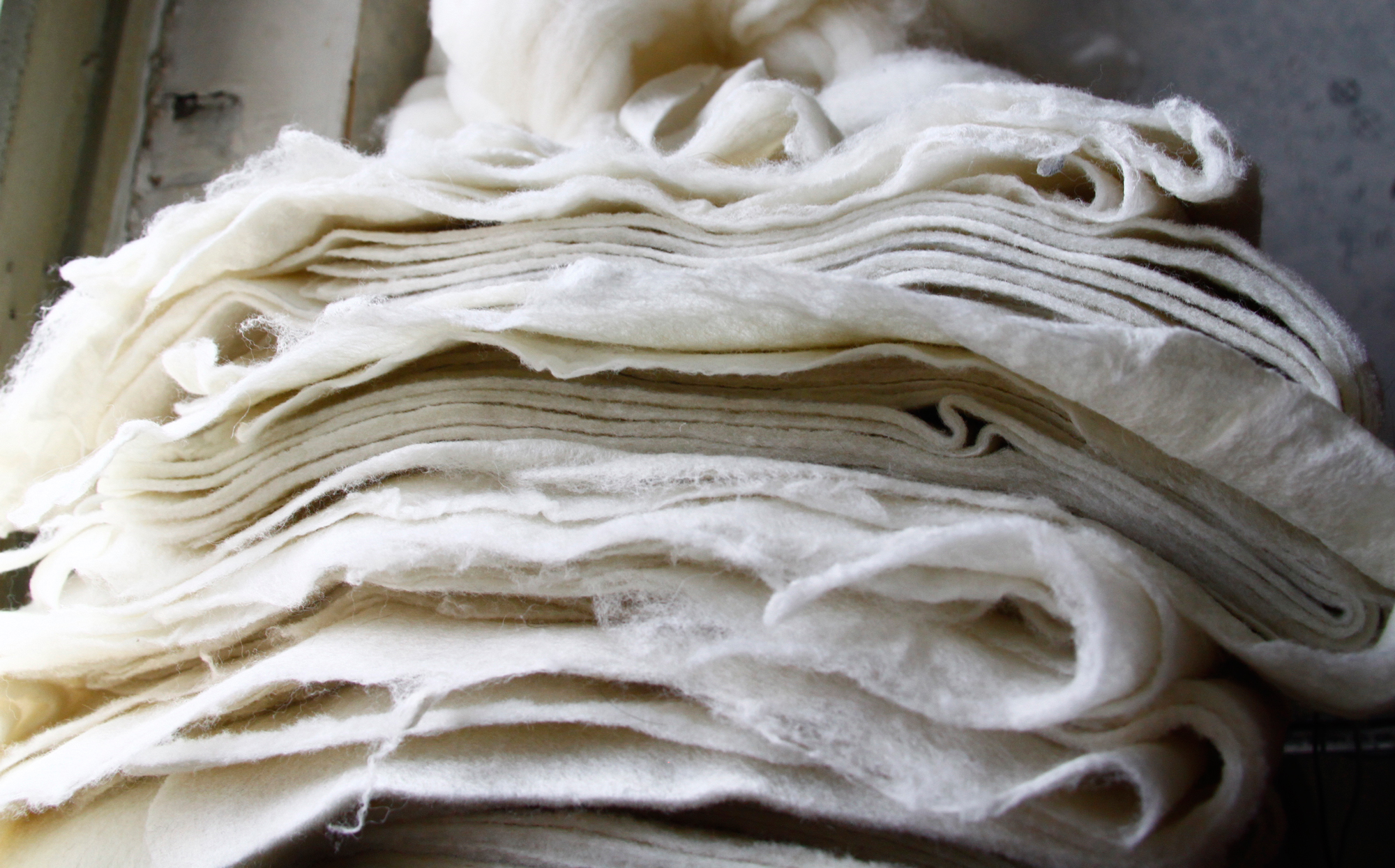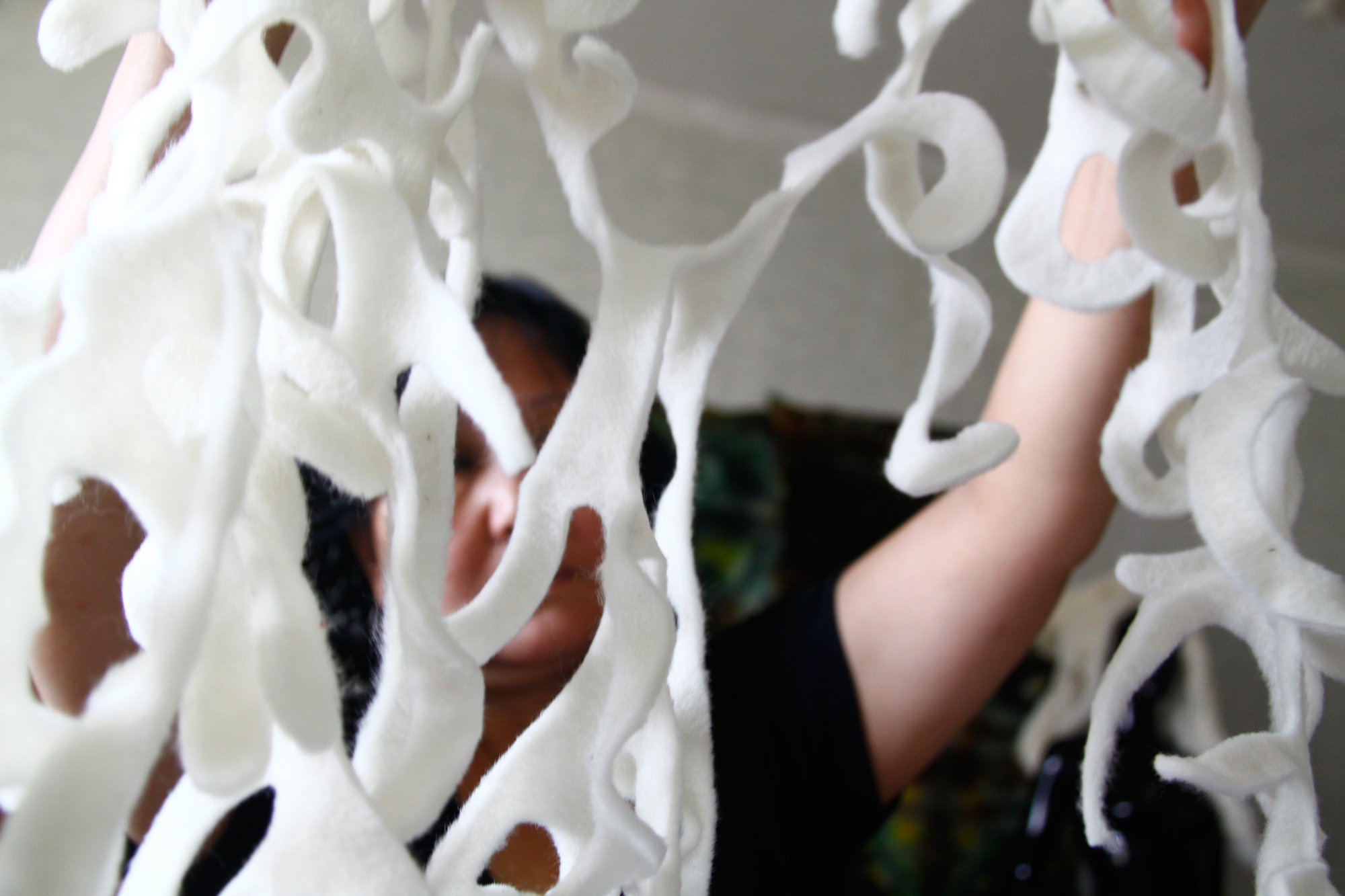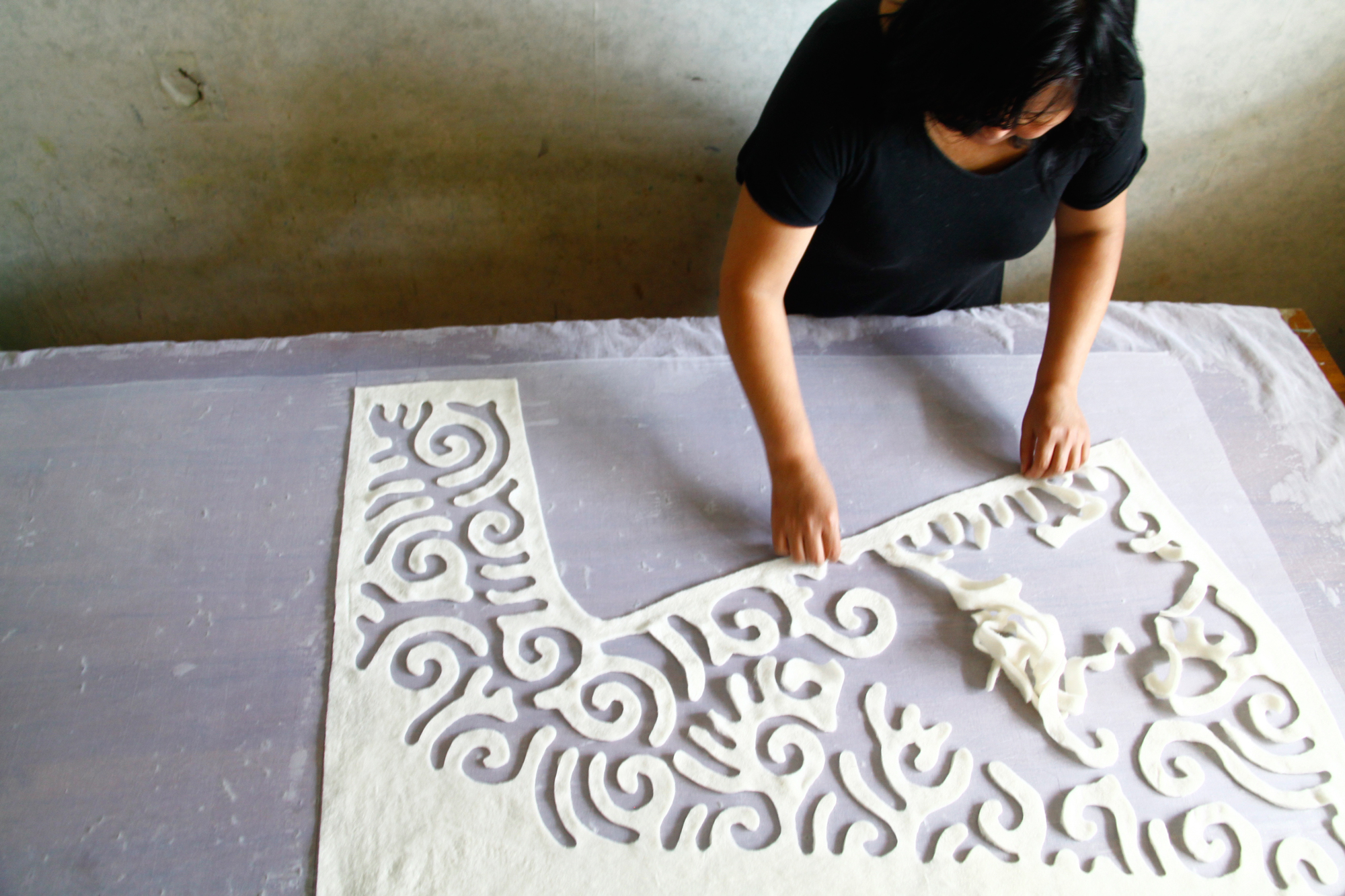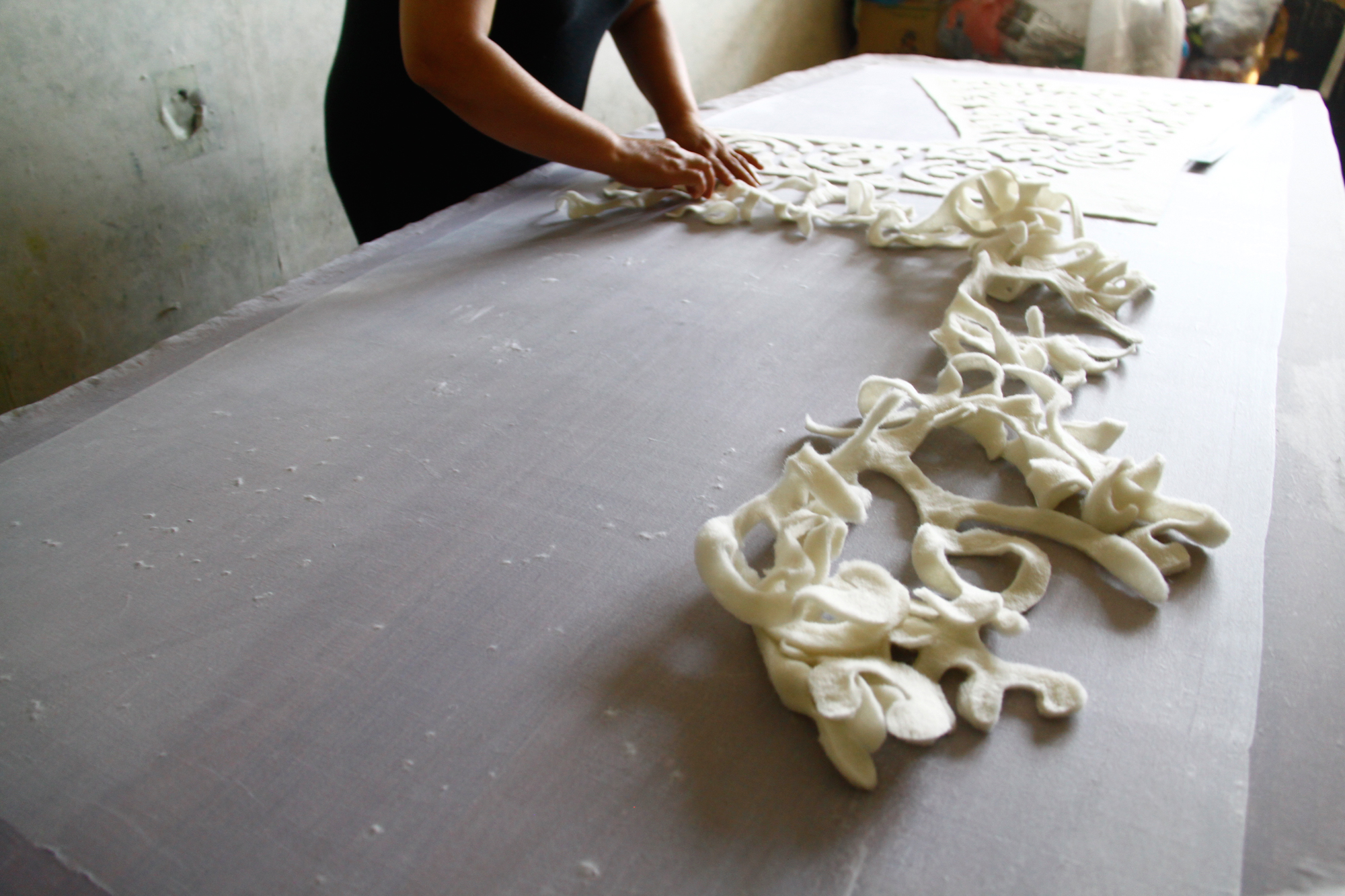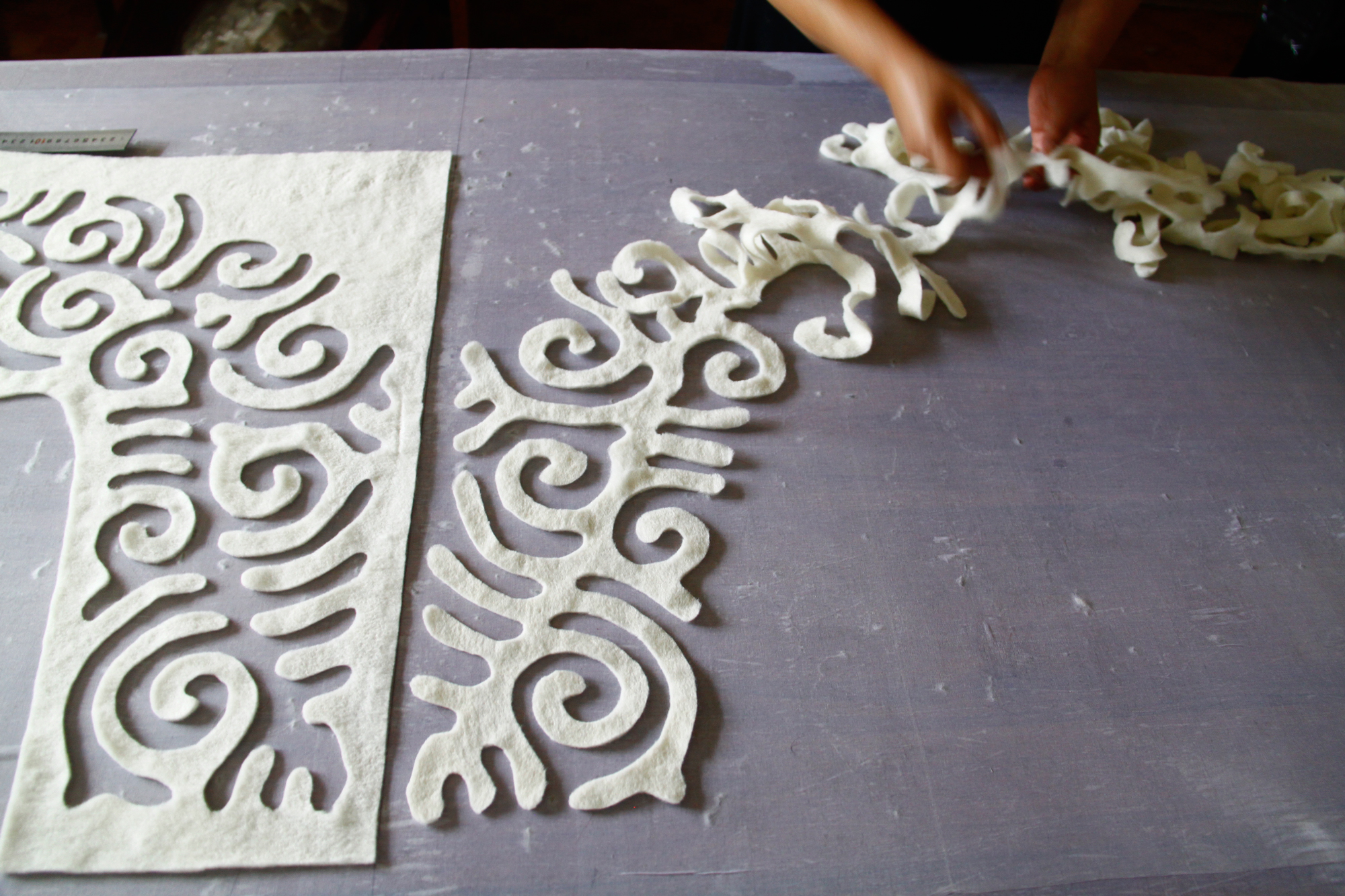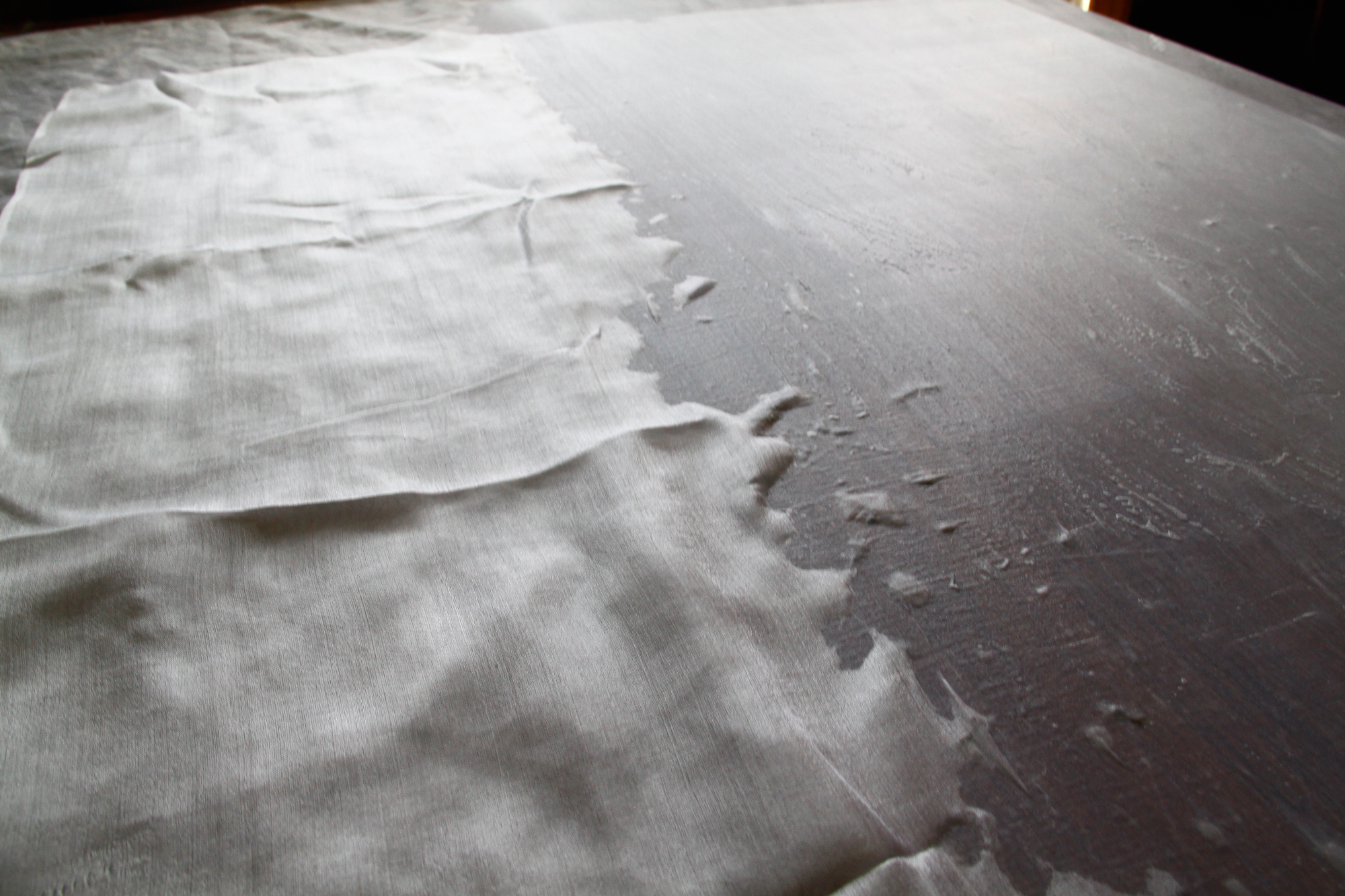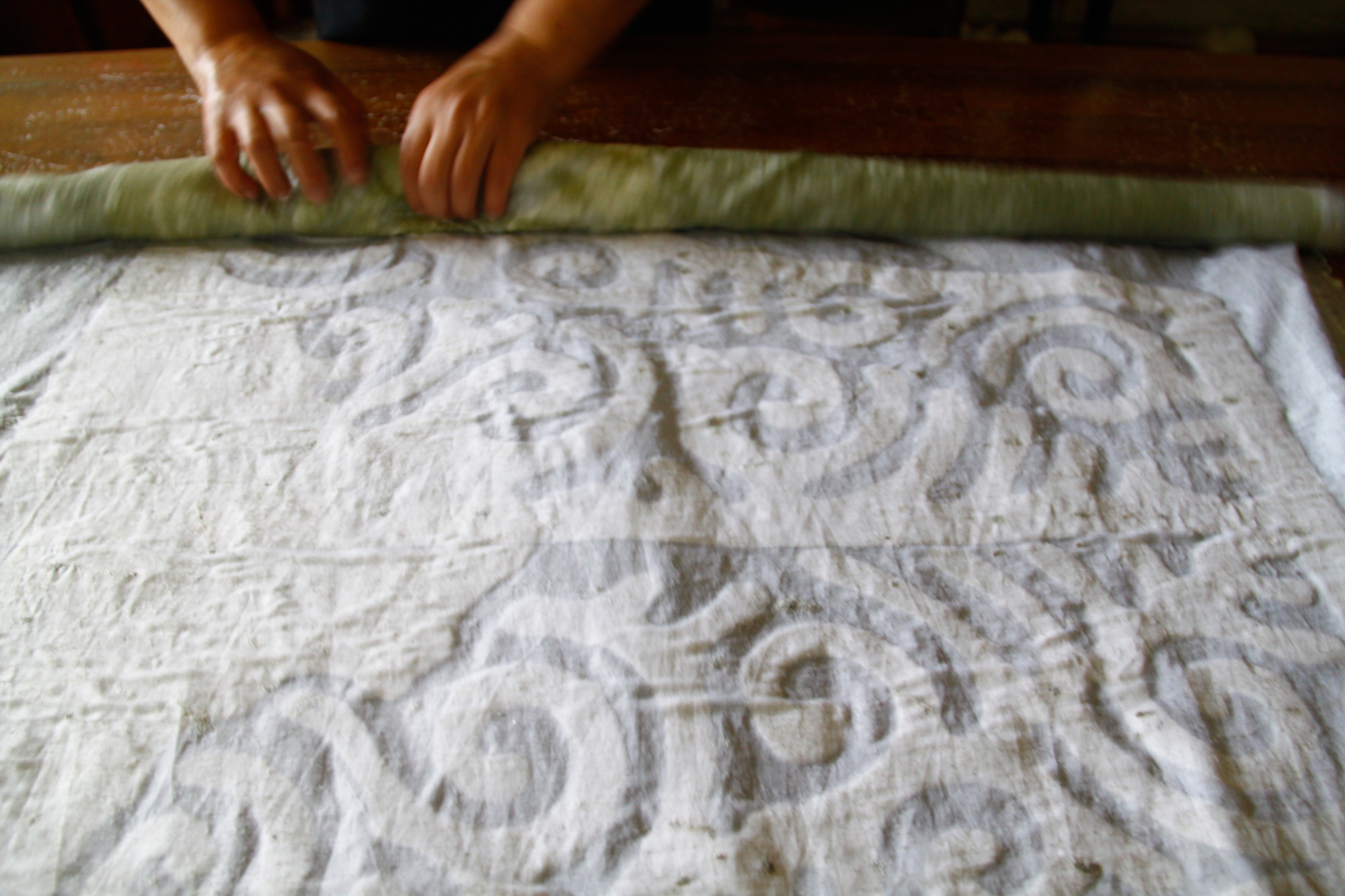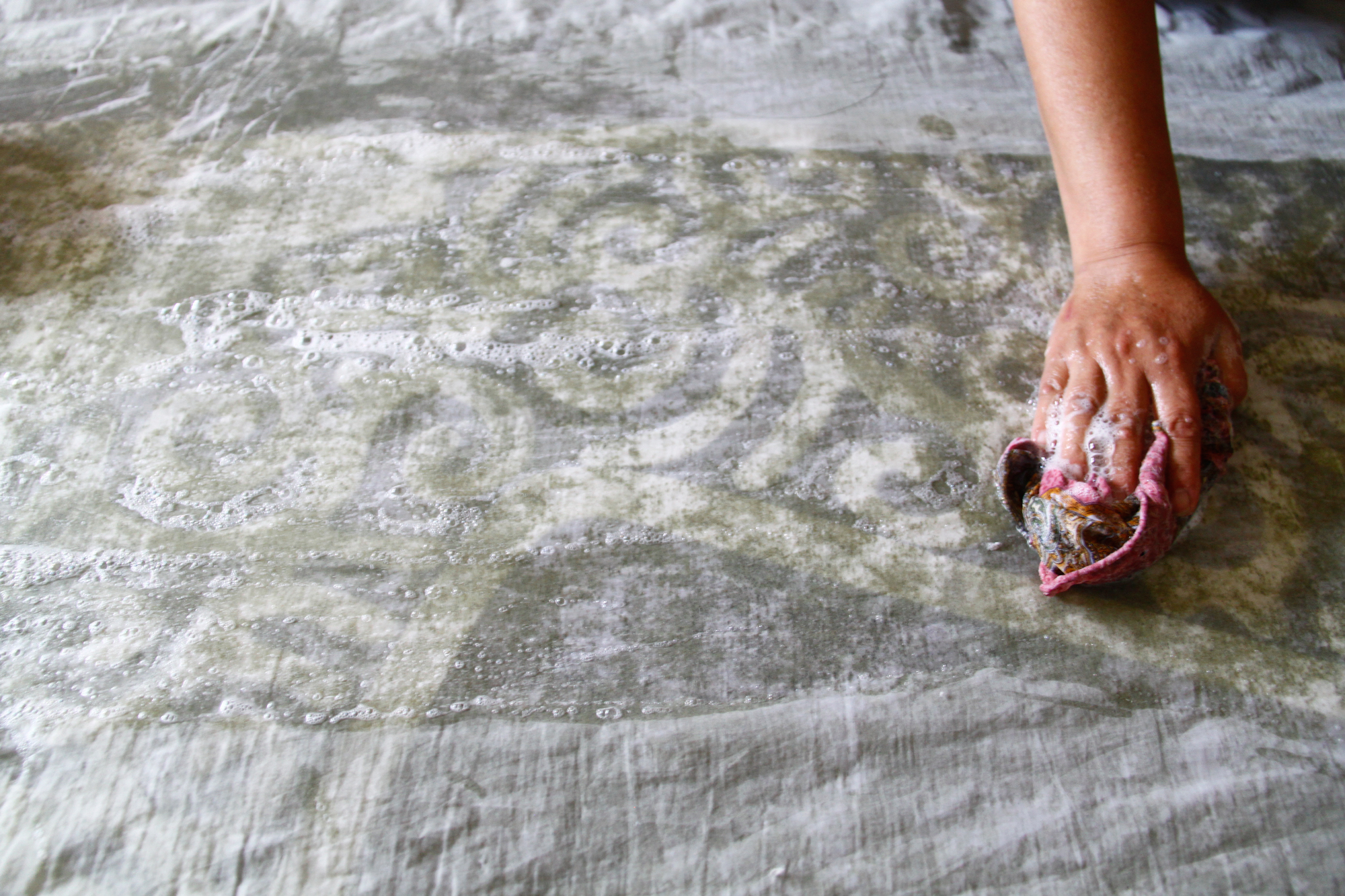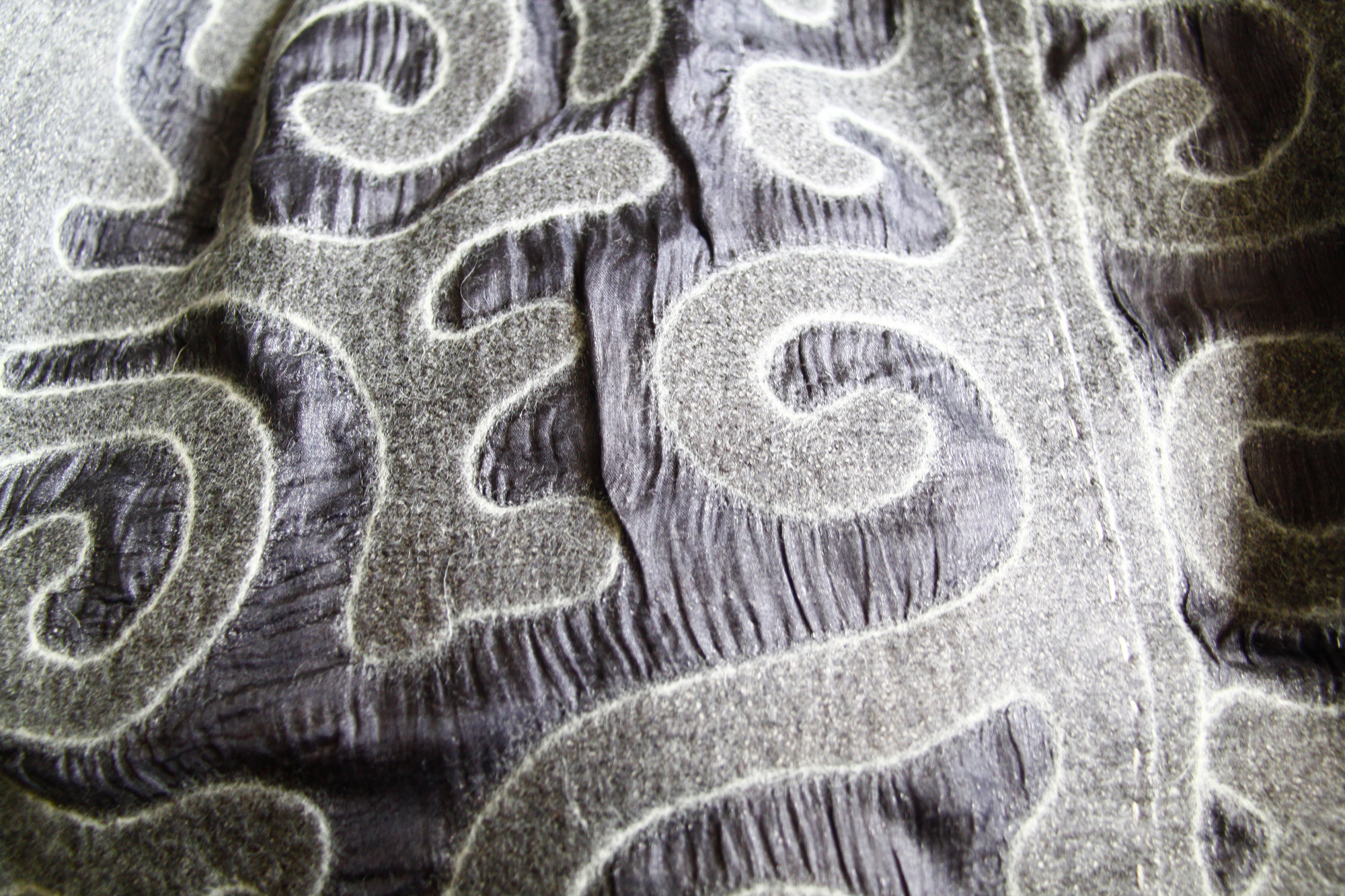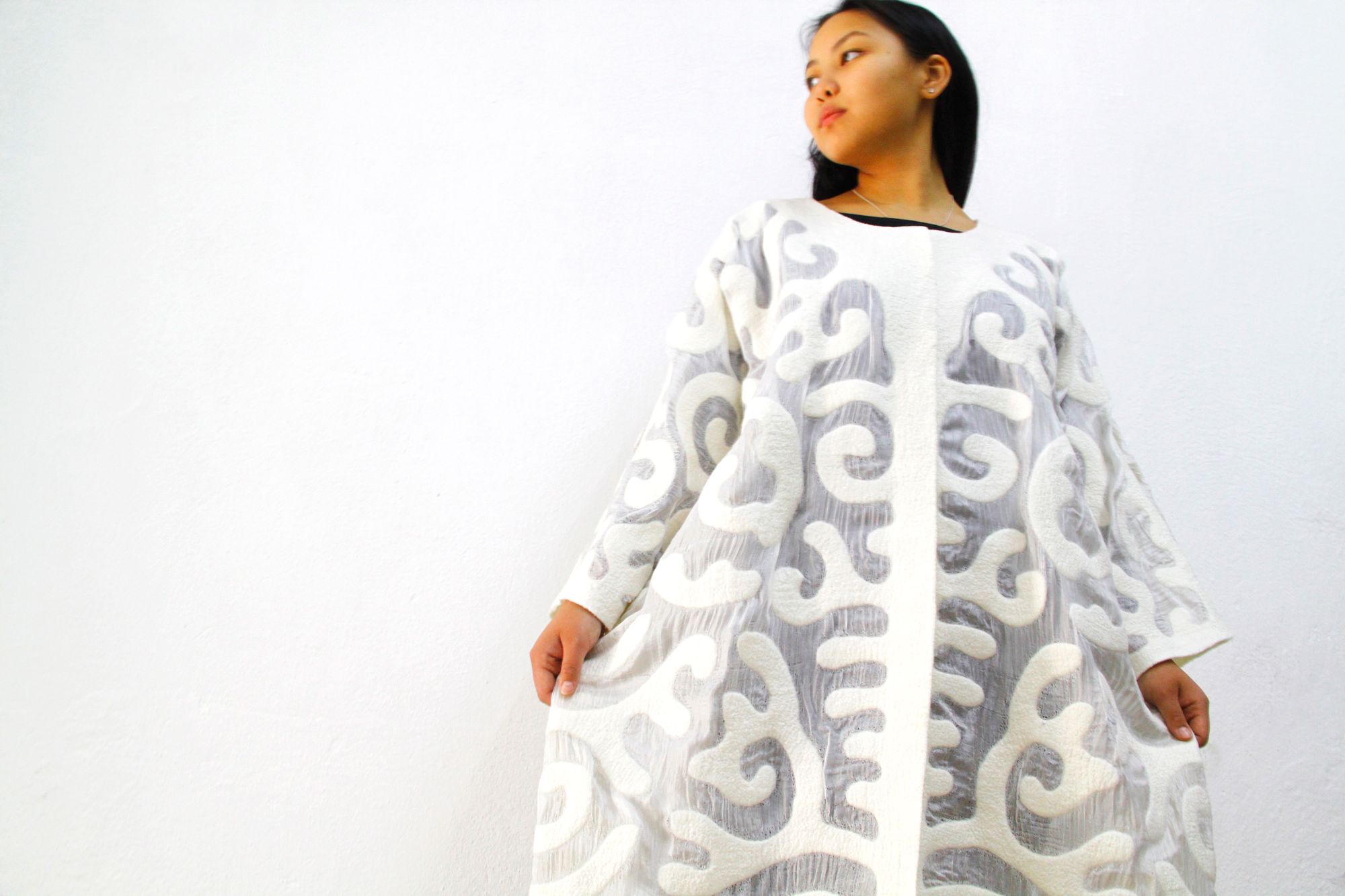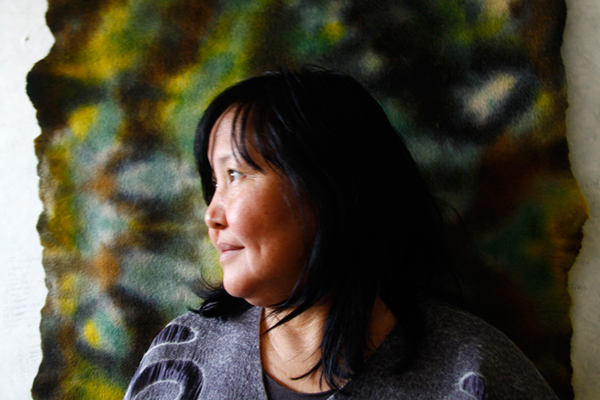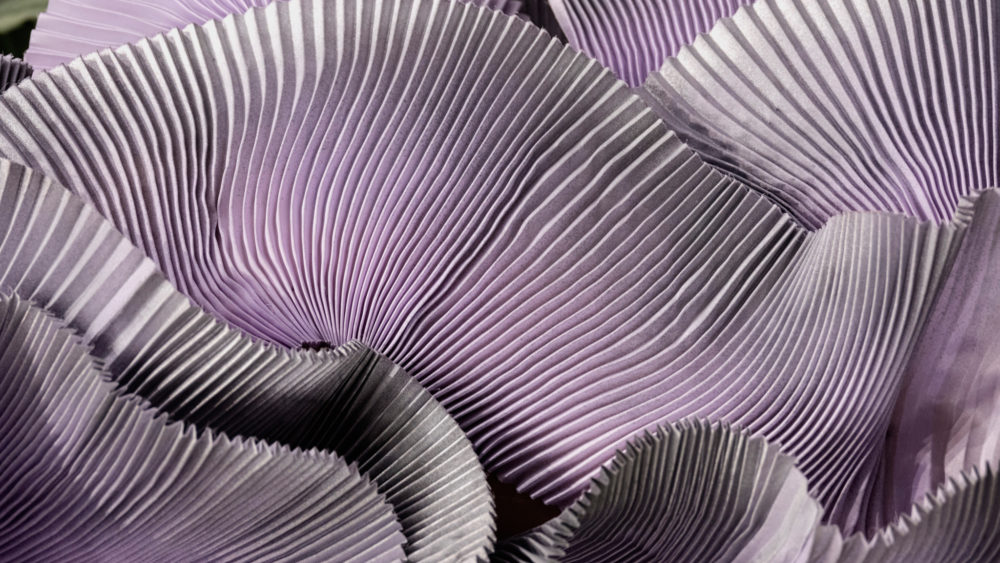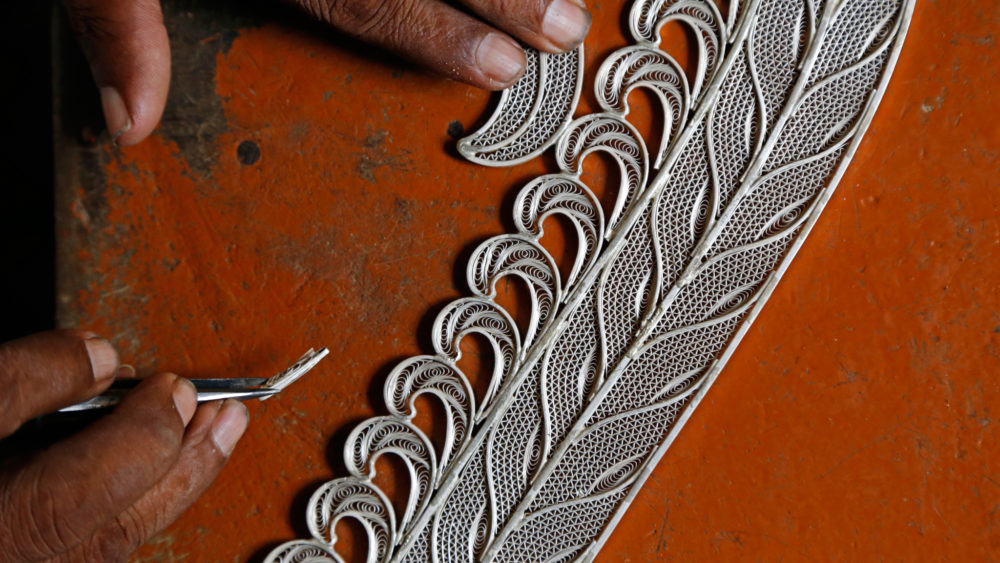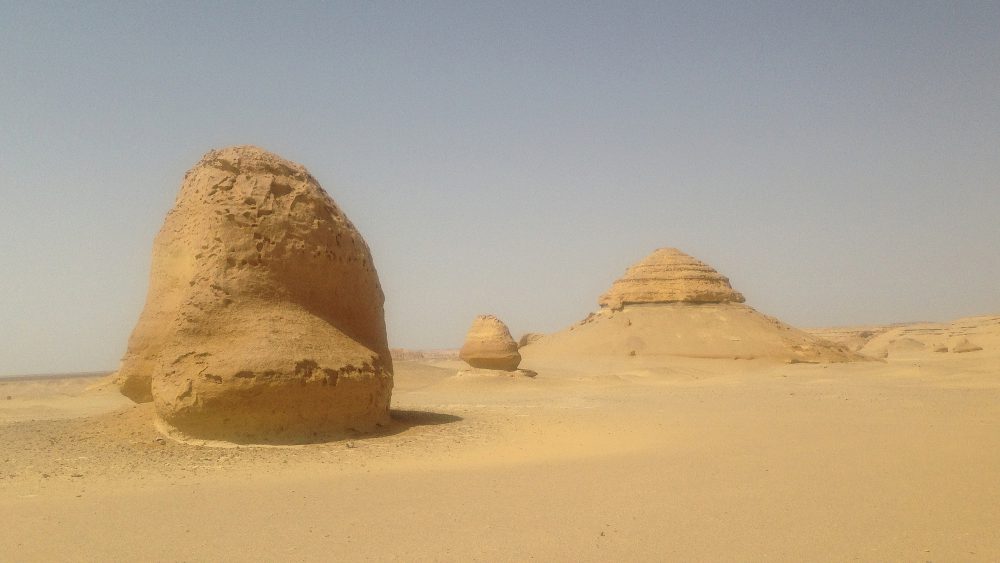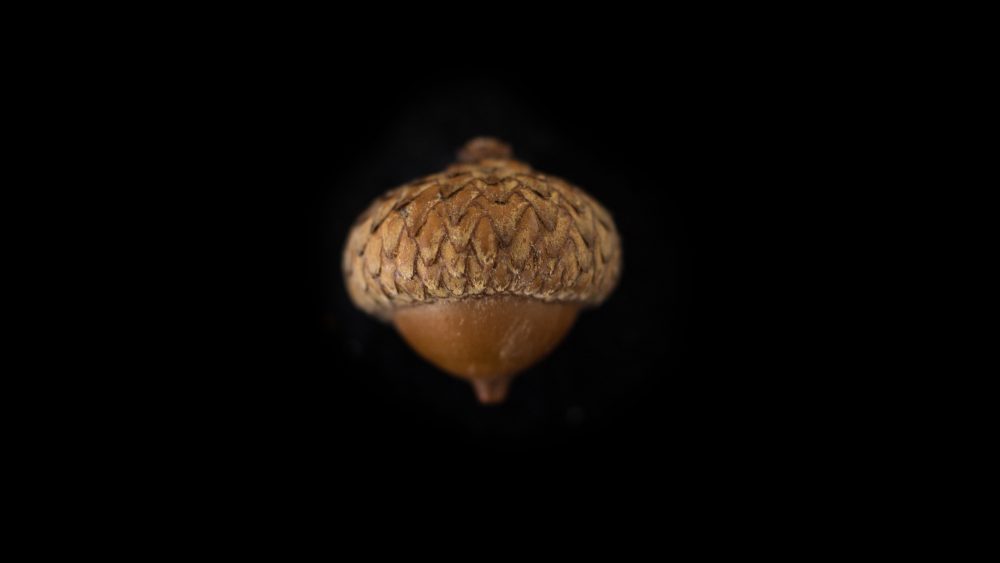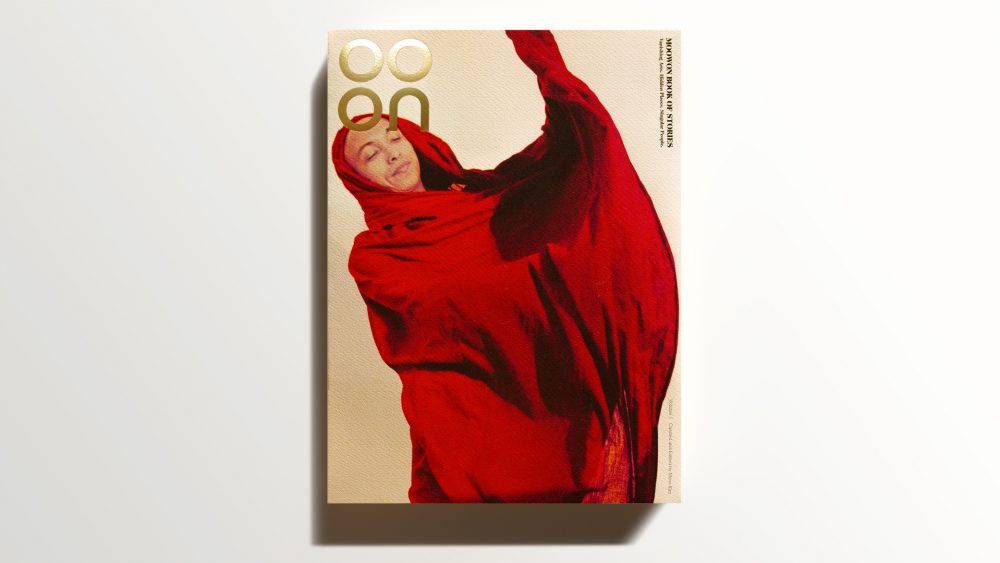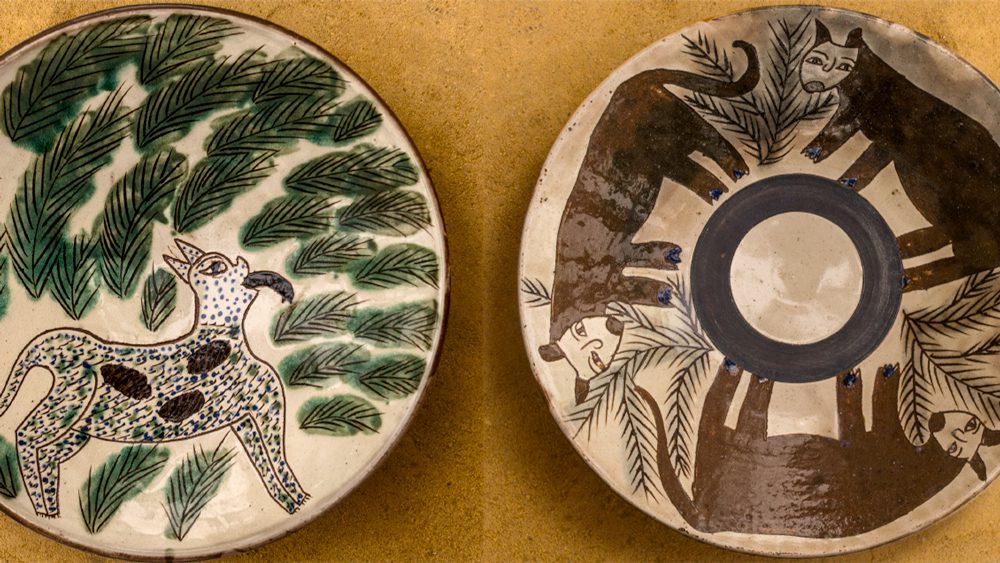Peripheries of Bishkek, the capital of Kyrgyzstan. Blocks of post-Soviet edifices firmly standing rather amiss between the grandiose landscape of Central Asia. In a tiny studio, near the windows which frame the Tien Shan mountains, is a woman awaiting introduction. One could conceive of Farzana Sharshembieva as a hermit artist. Her gaze is bedecked with aquiline sharpness. Her disposition possesses a child's openness. Her laughter is contagious.
Coming from a dynasty of artisans, this charismatic Kyrgyz woman has a persona, a personality and a past to reckon with. She expresses herself through the ancient tradition of felting, adding her zest of creativity and innovation to traditional Kyrgyz ornaments.
Farzana's works of art and textiles are laden with glorious poetry. She marries fine silk and soft merino wool to create her pieces, a description of which she amusingly terms as such: "Love happens between the two materials". Her clothes and scarves, adorned as they are with ancient sacred ornaments, exude a warm and seamless perfection, while her felt paintings and carpets are expressive of the aesthetic values of the Kyrgyz nomad. Speaking about her creative process, she says, "I love what I do. Like a kid I play here in my studio. It is my sanctuary and I can work here only alone. I am happy while I am creating, and once done, a piece has a life of its own. But to be honest, it is hard to part with my creations."
Today, Farzana has many accomplishments to her name. She is an artist par excellence at the forefront of Seven Sisters, one of the most successful handicraft labels in Kyrgyzstan. The Seven Sisters label epitomizes the power of family unity and the continuity of craftsmanship traditions across generations. Her six younger sisters (hence the label's name) follow her lead.
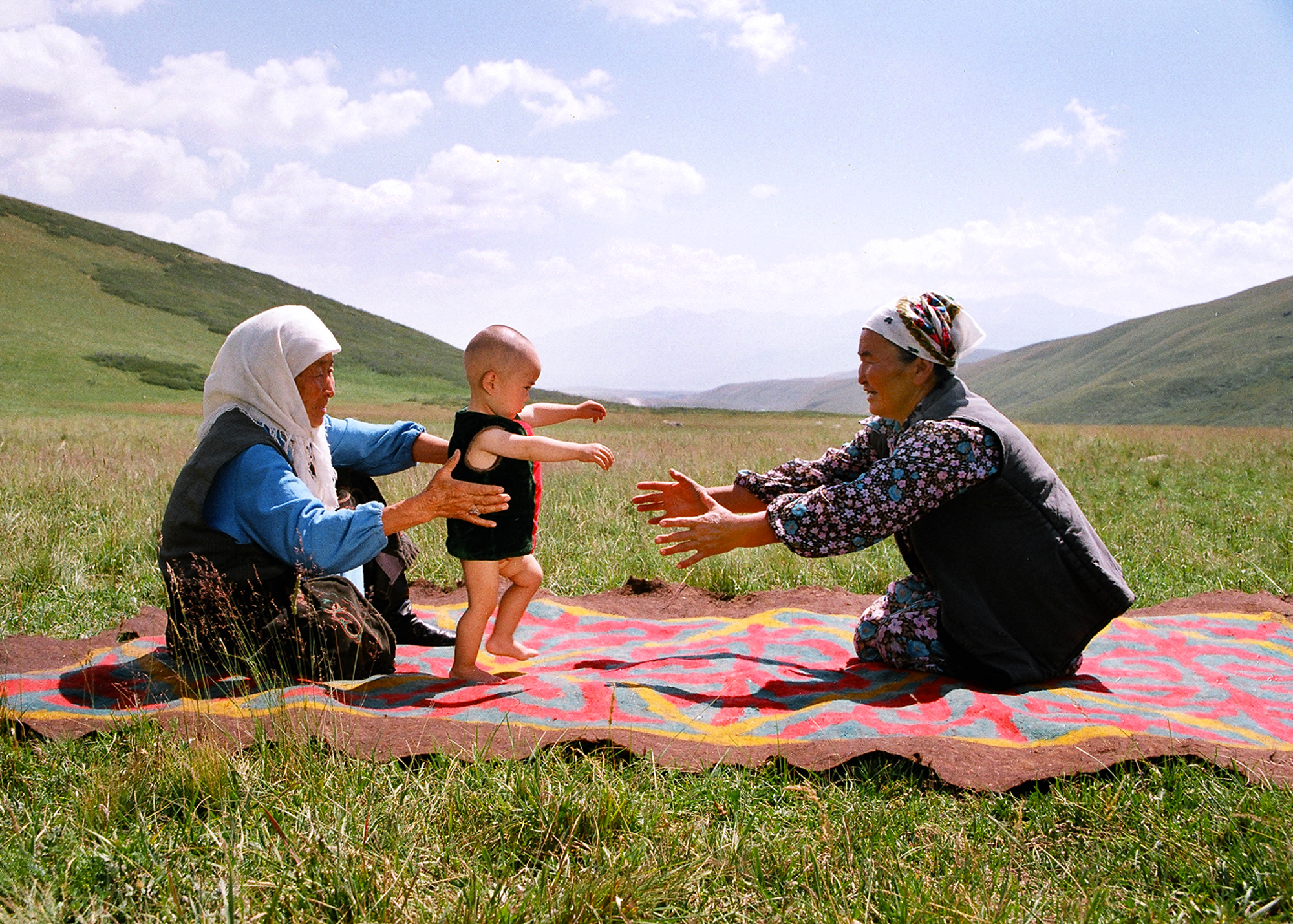
First steps of a child on "ala kiiz". Suusamyr Valley, Kyrgyzstan, 1990.
Felt is 100% natural. Every kyrgyz child grows up playing on "ala kiiz" and "shyrdak" ornamented felt rugs.
Photo: Erkin Boljurov.
"The Sharshembiev family tree is full of skillful artisans. My ancestors were saddle makers, silversmiths, jewelers, leatherworkers, and woodworkers. So, I have joined the league. Family is my source of power and inspiration. My father is my sensei, my greatest teacher. I've learned a lot from him. I always brag that he made the saddle gifted by Mikhail S. Gorbachev to Ronald Reagan during the Geneva Summit in 1985! When I was a kid, I used to run around his studio and watch him make saddles, chess sets, braid leather into elaborate harnesses, carve wood and even draw posters for Soviet movie premiers. He has influenced me in many ways. Soon I started to try making things with my own hands. By the age of 18, I knew well how to work with wood, so woodwork became one of my many professions. I also worked as a tailor, leatherworker and poster painter for many years. At last, I have completely given up myself to felting - my passion."
Art and Process
Behind Felting
Farzana has been familiar with felting since early childhood. She was raised by her grandmother, a master of "shyrdaks" or ornamented Kyrgyz felt rugs, and an influential figure in her life: "I have one special memory of my grandmother, walking through the fields and picking up small pieces of wool that the herds of sheep passing by had left on dried plants, the grass and the ground.. I was six years old and asked her, 'Why do you collect this?' Few weeks later she made me a personal felted rug with beautiful ornaments, and said, 'Remember the bits of wool I had collected on the field? Now you can see why; every bit of it is in this rug I've made for you.' Looking back, I understand that already then, my grandmother encouraged me to be resourceful and creative. I am glad that there is no waste in what I do for a living and most importantly, it is a free zone for my creativity."
From time immemorial to the present, felt and its associated practices have played an important role in the Kyrgyz nomadic culture. From felt covered yurts, rugs, clothes, to primal material in burial ceremonies and shamanistic healing sessions, it is intrinsic to the Kyrgyz cultural landscape. Traditional handicrafts are carriers of the aesthetic expression, talent and skill of a true artisan. It is a way of identifying oneself with others through shared traditions. Farzana's excellence is sourced within her ancestral heritage of craftsmanship. While being true to her generational roots, she continues to grant them new wings by shepherding old ways onto newer paths.
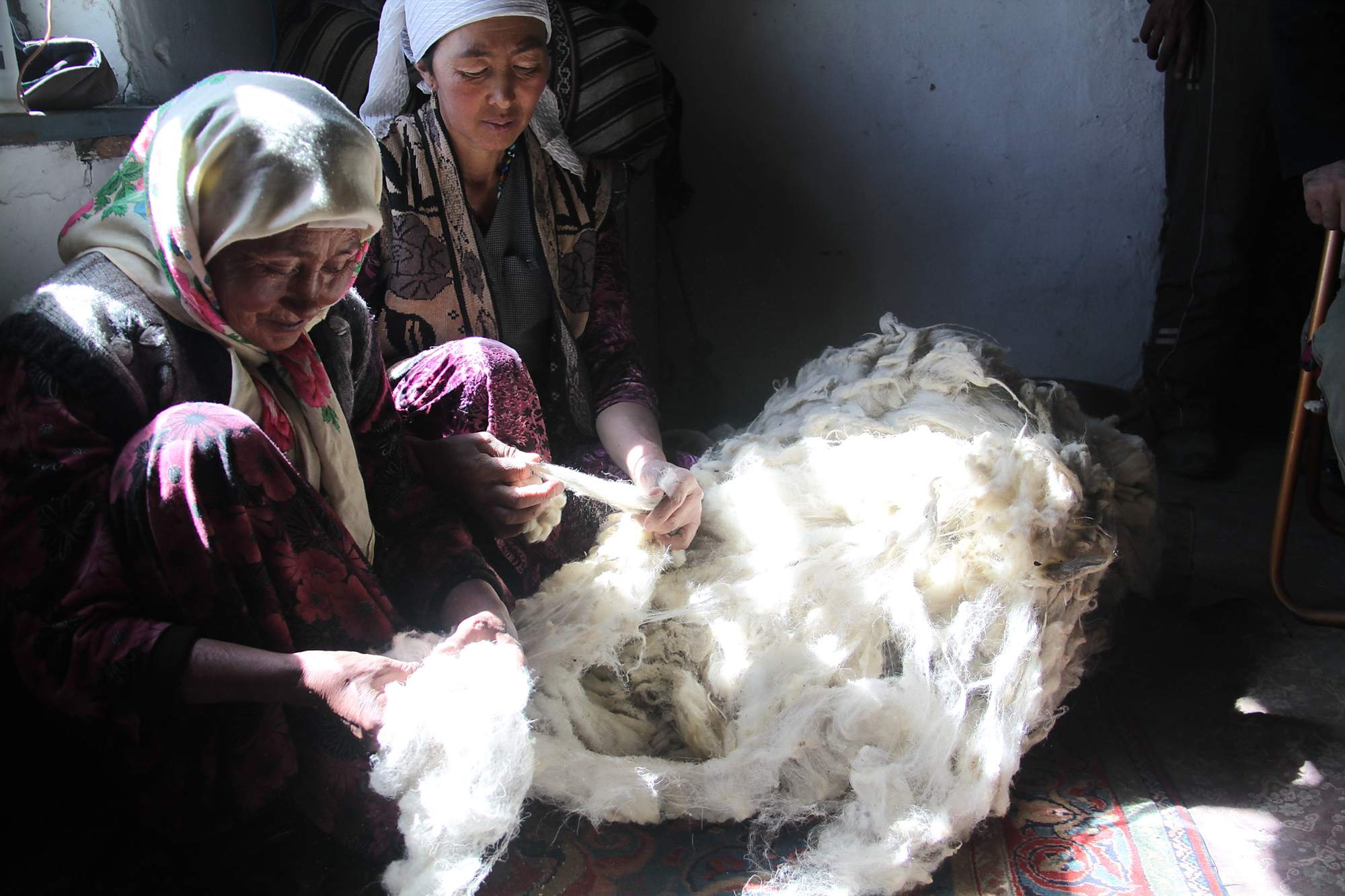
Women cleaning sheep wool in preparation for felting. 2010, Alai mountains, Kyrgyzstan.
In nomadic kyrgyz culture, felt is one of the most practical of materials, which is used in clothes, shoes, "terdik" (pad for underneath a saddle),
"ala kiiz", "shyrdak" rugs and most importantly in "boz ui" (yurt the nomadic dwelling).
Photo: Urmat Osmoev.
To enjoy the full story, become a Member.
Already a Member? Log in.
For $50/year,
+ Enjoy full-length members-only stories
+ Unlock all rare stories from the “Moowon Collection”
+ Support our cause in bringing meaningful purpose-driven stories
+ Contribute to those in need (part of your membership fee goes to charities)

